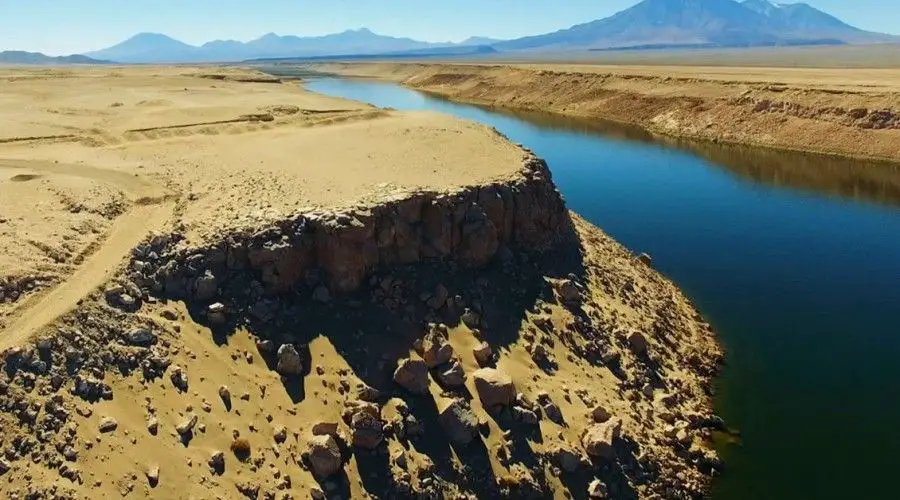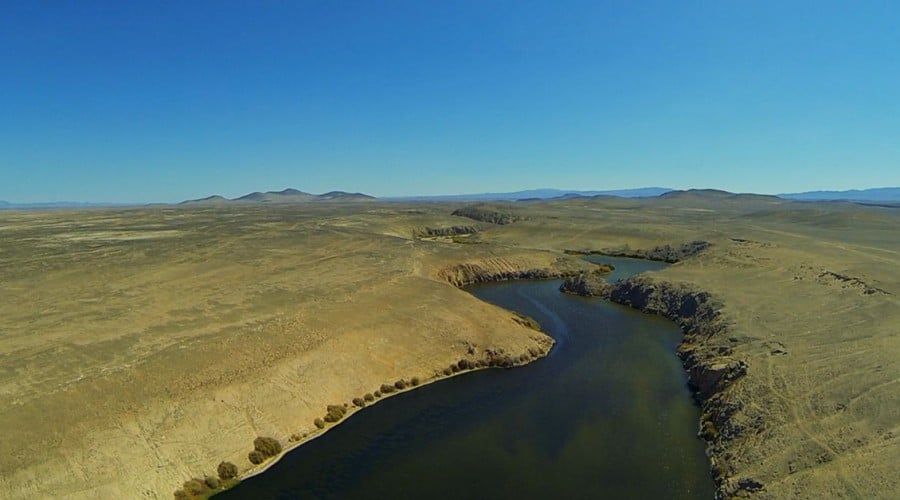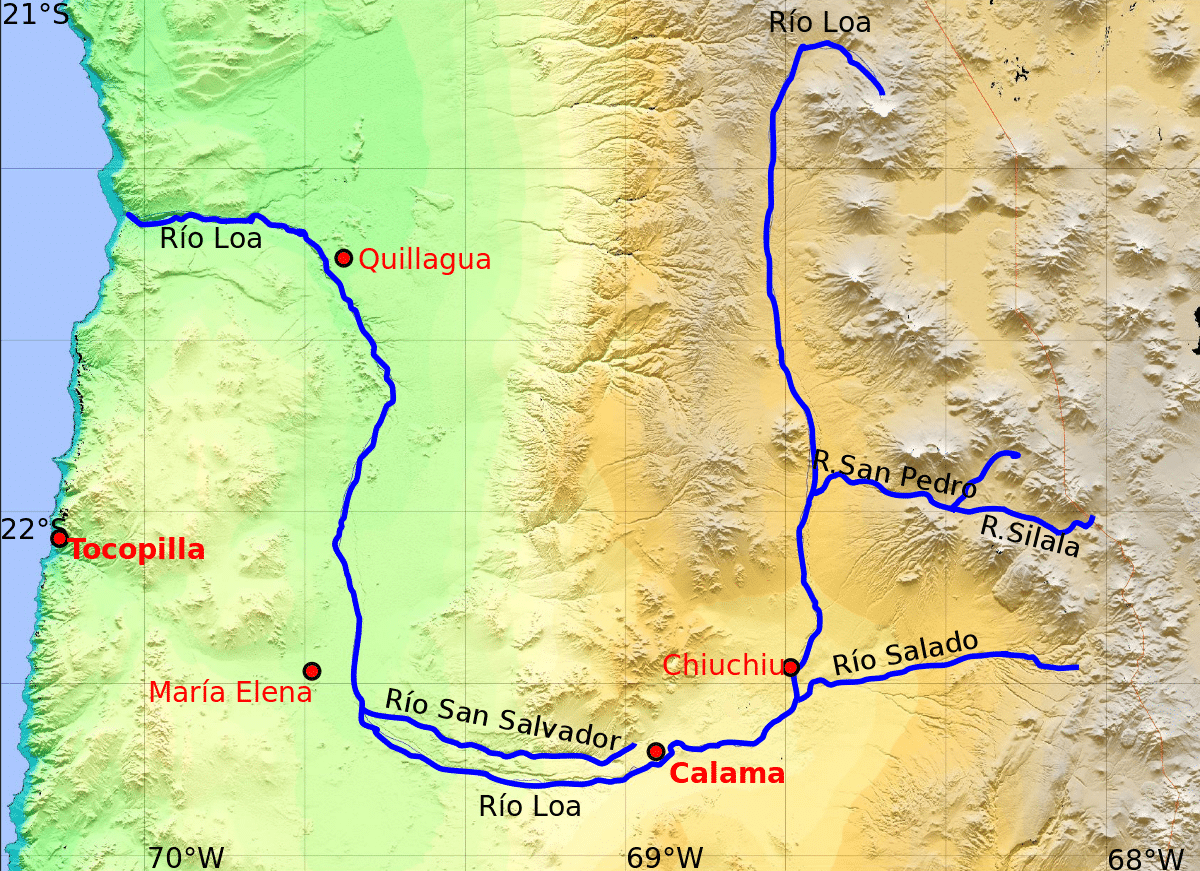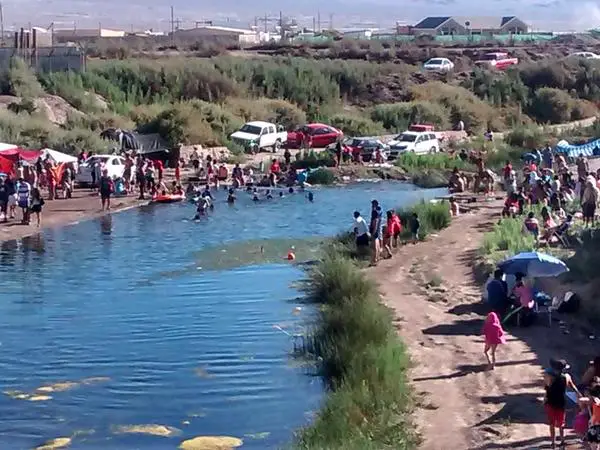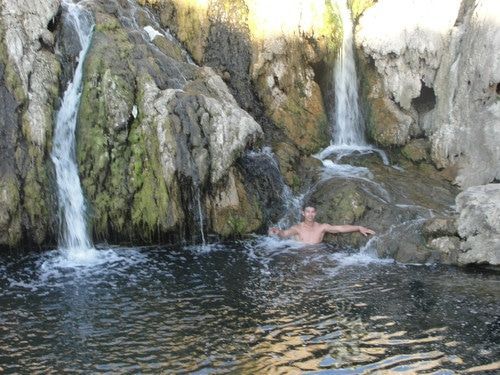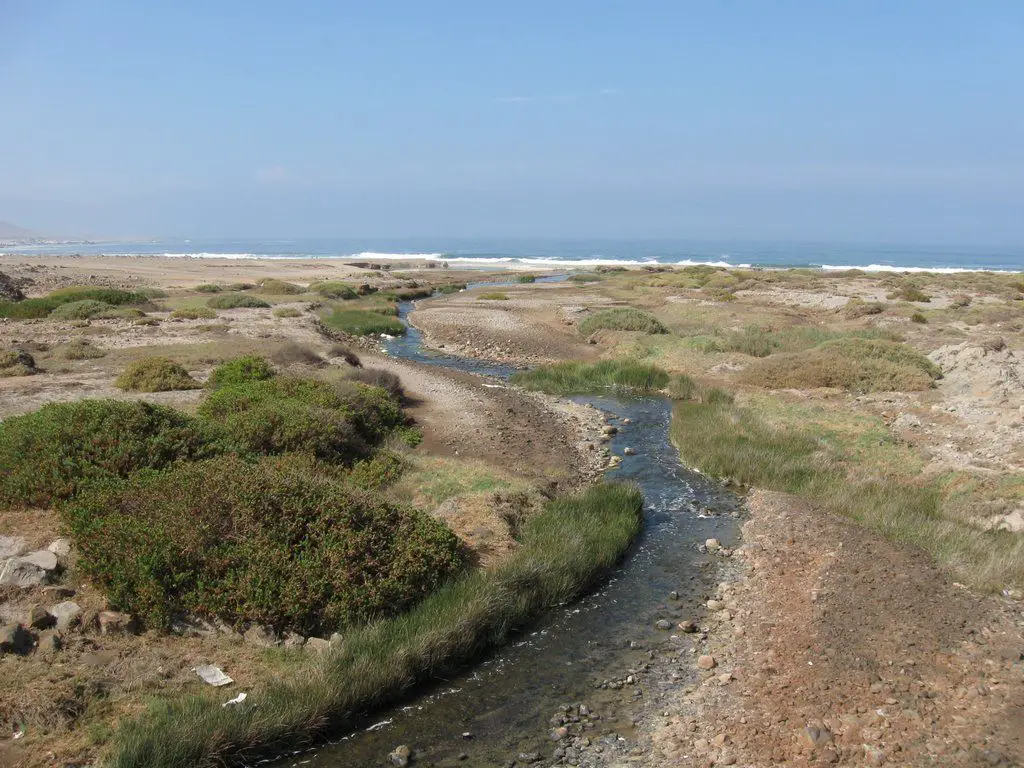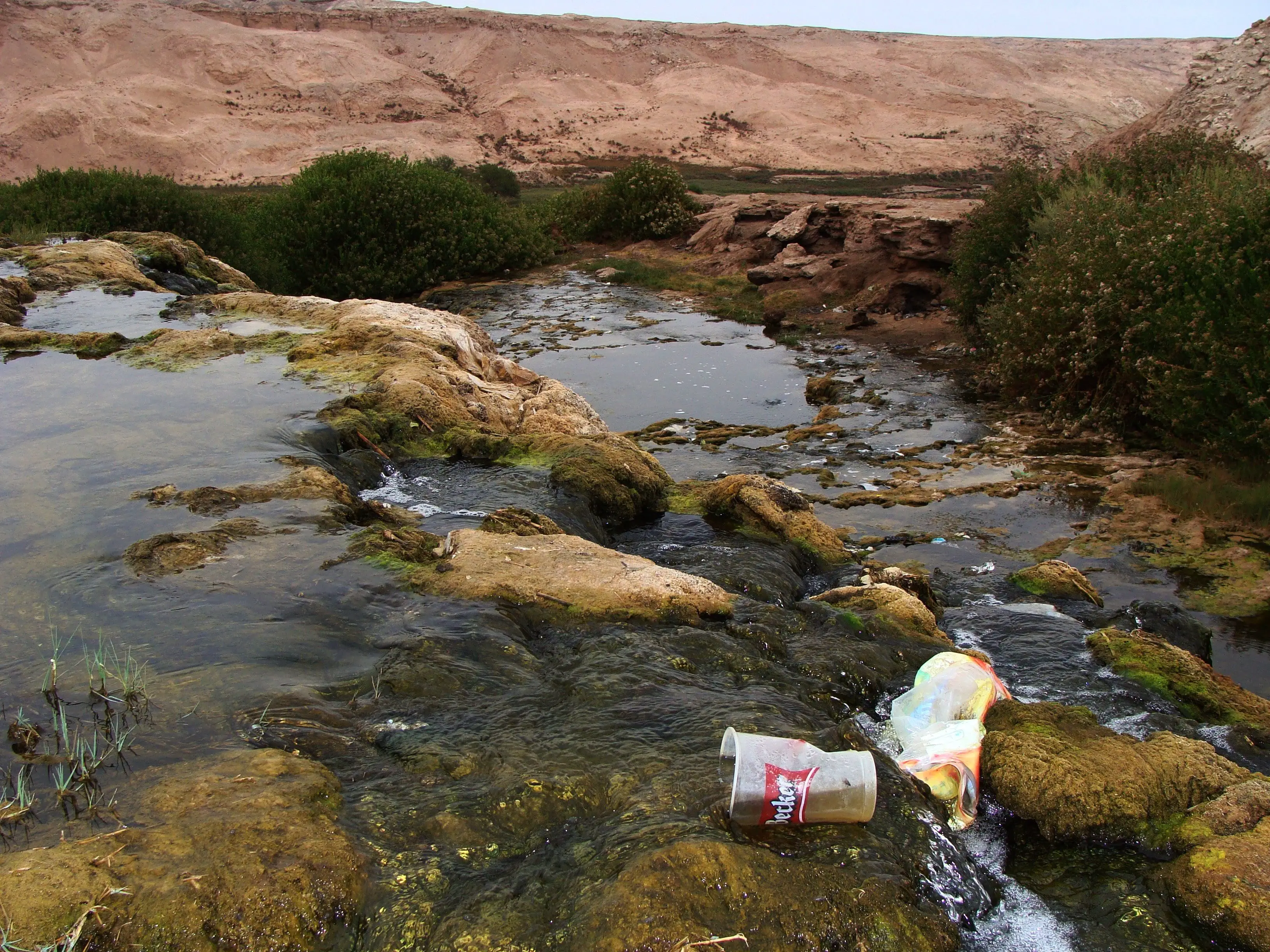If you want to know everything about our planet, I invite you to read and discover how wonderful rivers are, here you will learn all about the Loa River, the largest river in Chile.
The Loa River has its source in the Andes, about four thousand metres above sea level, at the foot of the Miño volcano. Its length is four hundred and forty kilometres.
Indice De Contenido
Characteristics of the Loa River
It is the longest river in Chile. It is a river with a very low flow, which makes it difficult to navigate, but this does not prevent it from creating beautiful oases with small waterfalls and wells where you can refresh yourself (see article: Lempa River).
The most impressive thing about the Loa River is that it crosses one of the driest deserts in the world (the Atacama Desert) and ends its journey in the Pacific Ocean. It is considered one of the wonders of Chile.
Location and map of the Loa River
The Loa River is located in northern Chile, in the region of Antofagasta and Tarapacá. It is the only river in the country that crosses the desert.
In the region of Antofagasta, the Loa River is very important and communities have settled around the oasis created by the river. This has been the case since pre-Hispanic times, when the Atacameño tribes settled in the area.
The most important city around the river is Calama, with a population of more than 140,000, which is devoted to mining. These communities are supplied with water from the Loa River.
It can be said that most rivers decrease their flow in summer, the Loa River is the opposite, during the summer it increases its flow, this is due to the altiplanic winter, which helps it not to dry up in the desert (see article: Colorado River).
Chile is divided into 7 hydrographic zones, the Loa River is in zone number one, each zone is defined by the peculiarity of its rivers, the Loa belongs to the exorheic rivers, which are directly connected to the ocean. This results in a unique and varied landscape of small waterfalls, lagoons, pools and backwaters (see article: Rio Manso).
The Loa River receives the waters of the San Pedro, Salado and San Salvador Rivers. It is thanks to the river that copper mining has been maintained, this being the largest mine in the world.
In the oasis that are formed is used for agriculture, where tropical fruits are grown for the sustenance of the inhabitants of the city. It is a tradition that on the first day of each year families gather around the river to share and bathe in its refreshing waters, unfortunately this tradition is in danger, then you will know why.
Polluted Loa River
It is deplorable that the Loa River, one of Chile’s wonders, is on the verge of disappearing due to pollution. Since 1997, this serious problem has increased due to the irrational use of chemicals such as xanthate and other highly polluting chemicals.
This has caused the people of Quillagua to abandon farming because the crops have dried up due to the high levels of chemicals in the water, forcing them to change their way of life.
As a result, they were forced to sell their water rights to the mining companies operating in the area, forcing them to leave their homes because they could no longer enjoy this vital liquid.
The community has banded together to try to clean up the river, but they can only manage to collect the rubbish, as the chemical contamination needs to be resolved by a specialised body and the use of these pollutants needs to be stopped.
At the moment, the area around the falls is not suitable for bathing due to the amount of rubbish that has accumulated. All this is causing a series of disasters, one of the worst is the drought of the river Loa, the mining companies, as owners of the water rights, do and undo without caring about the consequences, they have made a water intake and this almost dries up the river Loa, which later manages to resurface where previously the river San Salvador received, whose flow has decreased considerably (see article: Rio de la Plata).
In the following video you can see when the Loa reaches its mouth.

